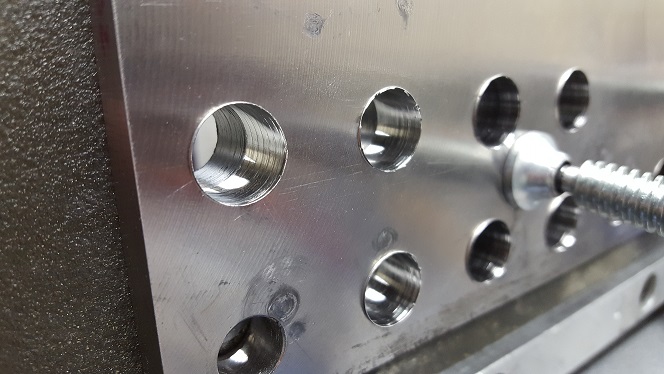Dry Drilling with CO2 Cooling
Drilling CFRP Features:
- Through-tool / through-spindle cooling
- Adaptable to machining centers and automatic drilling units (ADUs)
- Improved hole quality and tolerance
- Longer observed tool life
Increases in composite materials used in aerospace and automotive applications are growing at a very high rate due to the high strength and low weight properties. Particularly, composites are being used for the body of the aircraft, as these not only make the plane lighter and reduce emissions but improve durability. Composites, such as Carbon Fiber Reinforced Plastic (CFRP) are used as a stackup, or layup, in conjunction with a metal, commonly titanium (Ti).
Drilling CFRP, CFRP stackups, and composites with CO2 cooling is becoming increasingly popular. When working with CFRP, manufacturers often drill holes dry, or without flood coolant, as liquid coolant may affect the integrity of the CFRP matrix. Add in the layered titanium and the drilling process generates significant heat creating numerous problems, including de-lamination of the CFRP, frayed holes, exit damage, and low hole counts within tolerance. To offset heat from the drilling process, CO2 cooling is used as a through tool cooling agent to protect both layers. Solid CO2 snow particles, or dry ice, penetrate the heat zone and significantly cool the area through sublimation. Allows the ability to efficiently drill holes through all layers to install fasteners and other components. CO2 is readily available, environmentally friendly, and easier to control over other cryogenic machining alternatives, such as Nitrogen.
There are significant benefits of CO2 cooling in CFRP-Ti stackups including:
- 30% productivity increases
- 10% tool life improvements
- Energy savings
This CO2 based machine tool cooling system has been successfully adapted for use in Automatic Drilling Units (ADUs) used in aerospace assembly operations. An article based on a SAE International technical paper done by our VP of R&D, Dr, Nelson Sorbo and Engineering Manager, Jason Dionne shows multiple benefits of CO2 cooling in composites drilling –(https://www.sae.org/news/2014/11/study-shows-multiple-benefits-of-co2-cooling-in-composites-drilling)
Key results show that ADU drilling CFRP stackups with CO2 cooling results in:
- 10x faster production due to less heat buildup
- Fewer tool changes due to longer tool life
- Meets hole quality requirement
- Less than traditional MQL only requirement
- PCD tooling can provide additional production and cost advantages

